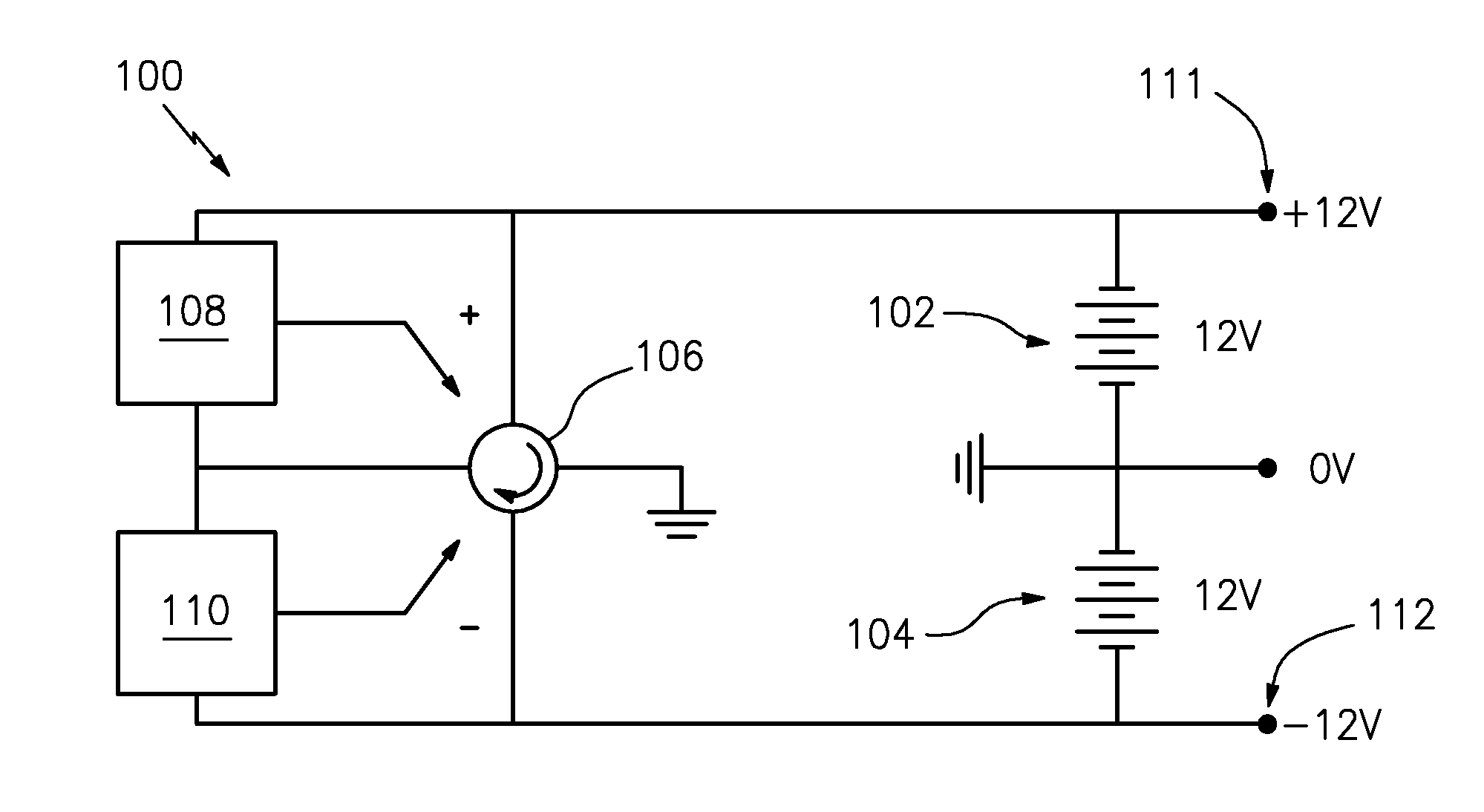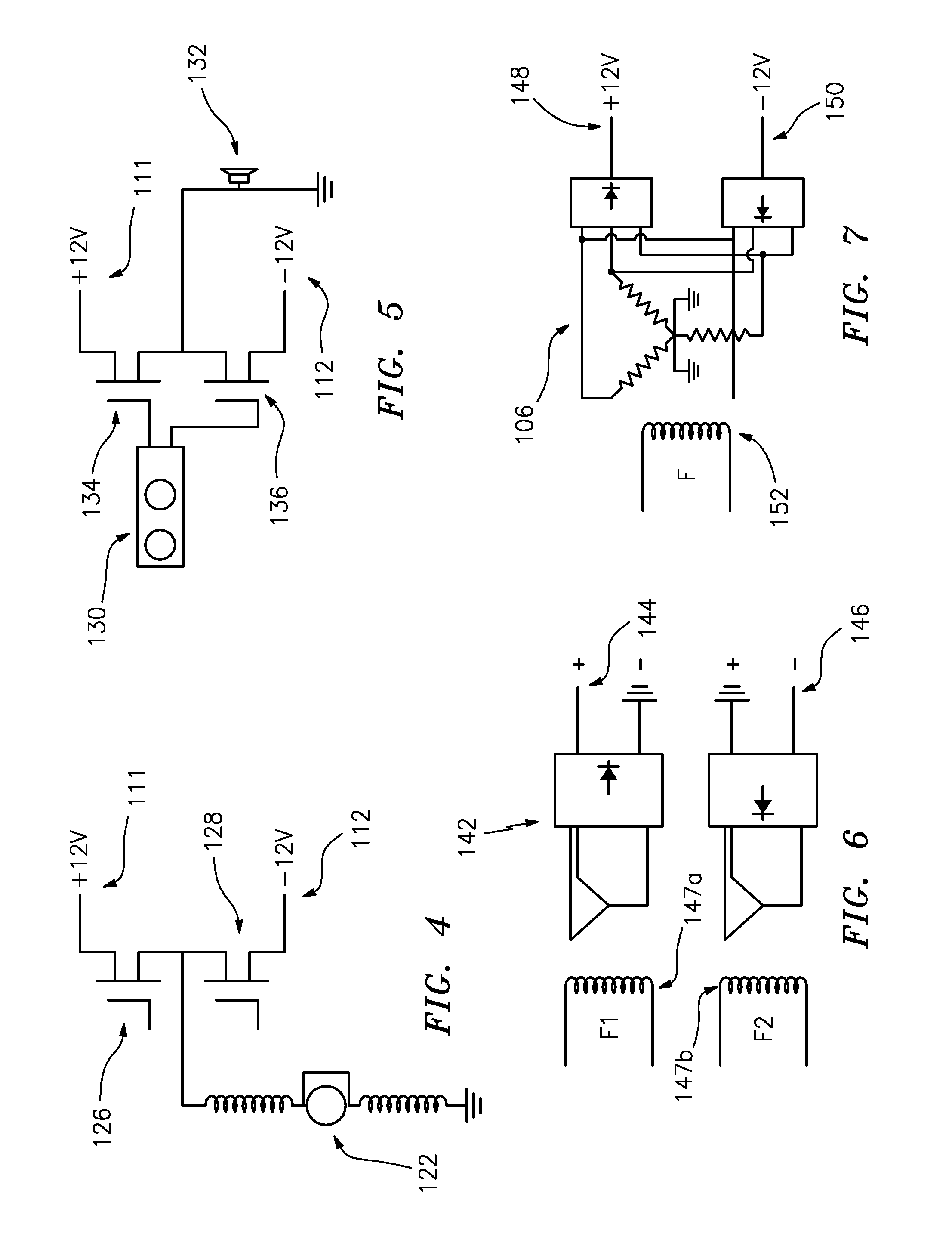Automotive bipolar electrical system
a bipolar electrical system and automobility technology, applied in the direction of motor/generator/converter stopper, dynamo-electric converter control, battery/fuel cell control arrangement, etc., can solve the problems of high copper cost due to the size of wires at 75-100 amperes, inefficiency of high-powered alternators at low voltage, and high cost of copper. , to achieve the effect of high volume production
- Summary
- Abstract
- Description
- Claims
- Application Information
AI Technical Summary
Benefits of technology
Problems solved by technology
Method used
Image
Examples
Embodiment Construction
)
[0043]FIG. 1, labeled “Prior Art”, shows the common automotive electrical system 10 comprising: a single 12 V battery 12 electrically connected to an alternator 14 and a voltage control 16. It is unipolar.
[0044]Referring to FIGS. 2-8 in detail, Applicant has disclosed a “Bipolar Automotive Electrical System”, both in apparatus and method form.
[0045]Applicant's invention can be thought of broadly, in “apparatus” terms, as a bipolar electrical system comprising an electrical circuit having: two (e.g., 12 V) batteries (e.g., 102, 104) of equal, but opposite voltage (e.g., +12 V, −12 V), in bipolar; a bipolar alternator (e.g., 106), with two opposite voltage outputs (i.e., plus and minus), responsive to the batteries (e.g., 102, 104) and controlling electrical charge to the batteries individually; two voltage controls (e.g., 108, 110), separately charging the two batteries (e.g., 102, 104); and wherein bipolar DC outputs (e.g., +12 V, −12 V) at 111, 112 from the batteries (e.g., 102, 1...
PUM
 Login to View More
Login to View More Abstract
Description
Claims
Application Information
 Login to View More
Login to View More - R&D
- Intellectual Property
- Life Sciences
- Materials
- Tech Scout
- Unparalleled Data Quality
- Higher Quality Content
- 60% Fewer Hallucinations
Browse by: Latest US Patents, China's latest patents, Technical Efficacy Thesaurus, Application Domain, Technology Topic, Popular Technical Reports.
© 2025 PatSnap. All rights reserved.Legal|Privacy policy|Modern Slavery Act Transparency Statement|Sitemap|About US| Contact US: help@patsnap.com



